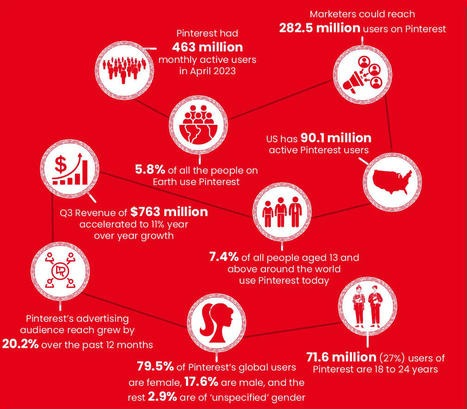
1. The Dynamic Landscape of Digital Marketing
The dynamic landscape of digital marketing encapsulates an array of tactics essential for engaging, converting, and retaining customers within the expansive online environment. In this continuously evolving realm, adaptability is imperative. Businesses are increasingly reliant on digital strategies to thrive in the modern era. Digital marketing encompasses various strategies that help businesses thrive in the digital age. From search engine optimization (SEO) and search engine marketing (SEM) to social media marketing (SMM), content marketing, and email marketing, businesses leverage these tactics to engage audiences and build brand awareness. SEO, the backbone of successful digital marketing, involves optimizing websites to rank higher in search engine results, thus increasing visibility and credibility. Conversely, SEM focuses on paid advertising through platforms like Google Ads. SMM harnesses social media to build brand awareness, while content marketing revolves around creating and distributing valuable, relevant content. Email marketing, affiliate marketing, and influencer marketing are also key strategies, alongside video marketing, which has gained prominence across platforms. Using a mix of these strategies can maximize reach and impact, enabling businesses to navigate the dynamic digital marketing landscape. To adapt effectively to this dynamic landscape, businesses must remain agile and tailor their approach based on industry trends and consumer behavior. As technology and consumer preferences continue to evolve, digital marketing strategies must also evolve to effectively meet the demands of a changing digital world. (Source: Medium: Exploring the Dynamic Landscape of Digital Marketing) https://www.scoop.it/topic/webtrafficsoftware8/p/4152070608/2024/04/04/trafficwave-generator-review-drive-targeted-traffic-from-pinterest-with-ease
2. Personalization and Customized Experiences
Personalization has become a cornerstone of modern digital marketing, as brands seek to create tailored experiences for their customers. In today's digital age, the importance of personalization and customized experiences cannot be overstated. The tailored approach allows businesses to connect with their audience on a deeper level, fostering brand loyalty and increasing engagement. Research indicates that personalized marketing plays a pivotal role in creating engaging and customized experiences for customers, ultimately leading to enhanced brand loyalty and heightened customer satisfaction. By offering tailored experiences, businesses not only differentiate themselves from competitors but also establish a unique selling proposition that resonates with their audience. Personalized shopping experiences have been found to encourage consumers to become repeat buyers, emphasizing the significance of personalized marketing in driving customer retention and repeat business. Additionally, personalized marketing messages are observed to be more relevant and interesting to customers when compared to generic or mass-marketed messages. This relevance and personal touch contribute to an increase in customer engagement and interest, leading to higher conversion rates and revenue growth. Businesses that have successfully implemented personalization into their digital marketing strategies have witnessed a spike in customer engagement and conversion rates. Through personalized communications and experiences, businesses can strengthen customer relationships, boost loyalty, and adapt to the evolving expectations of the modern consumer. The value of getting personalization right extends beyond just marketing or analytics—it is an organization-wide opportunity to connect with customers on a more personal level and build lasting relationships. Personalization is therefore an essential trend in digital marketing, offering businesses the opportunity to stand out, build stronger connections, and deliver highly relevant and engaging experiences to their audience. (Source: Marketing personalization — what it is, why it matters, and how to do it)
3. AI and Machine Learning in Marketing
Artificial Intelligence (AI) and machine learning have revolutionized marketing by optimizing strategies and enhancing customer engagement. These technologies allow marketers to analyze massive data sets, identify patterns, and make predictions, giving them a competitive edge and allowing for more personalized and effective campaigns. AI and machine learning algorithms are trained using extensive sets of data to make complex predictions and decisions. They enable marketers to understand customer behavior, preferences, and purchase patterns. Machine learning models can recognize trends, segment audiences, and predict future consumer actions, thereby empowering marketers to create more targeted and personalized campaigns. One of the key advantages of AI in marketing is its ability to process and analyze vast amounts of data. This empowers marketers to understand customer journeys, personalize content, and offer products and services that are highly relevant to individual consumers. AI-driven analytics can reveal valuable insights for optimizing advertising spending, identifying high-value customers, and predicting customer lifetime value. Additionally, AI facilitates dynamic pricing, personalized recommendations, and the creation of hyper-personalized customer experiences. AI and machine learning have shifted marketing from a mass advertising approach to more micro-targeted strategies. By implementing machine learning, marketers can achieve exceptional results in terms of relevance, engagement, and conversion rates. These technologies also enable real-time decision-making, allowing marketers to adapt their strategies based on evolving customer behavior and market trends. The adoption of AI and machine learning in marketing has become essential for businesses seeking to gain a competitive advantage, enhance customer engagement, and improve overall marketing effectiveness. (Source: The Impact of AI & ML on Marketing and Machine Learning in Marketing: A Complete Guide)
4. Voice Search Optimization and SEO Strategies
Voice search optimization has become a critical aspect of SEO strategies, reshaping content creation and user experience. It involves tailoring content to match the conversational tone of voice searches and ensuring that websites are easily discoverable through voice-enabled devices and virtual assistants. As voice search continues to gain popularity, businesses are adapting their SEO strategies to reflect this evolving search behavior. The emergence of voice search has led to a shift in SEO practices, emphasizing the use of conversational, long-tail keywords to align with the natural language used in voice queries. Optimizing for voice search also requires a focus on local SEO, as users often use voice search to find nearby businesses or services. Understanding customer intent and providing direct, concise answers to commonly asked questions is essential for voice search optimization. Strategies for voice search optimization encompass various aspects, including content structuring, the use of schema markup for enhanced search results, and mobile optimization to accommodate voice-based queries. Websites that load quickly, have intuitive navigation, and provide concise, informative content are more likely to perform well in voice search results. The future of SEO is undeniably intertwined with voice search optimization. Businesses that proactively adapt their SEO strategies to accommodate voice search not only enhance their online visibility but also offer a more seamless and user-friendly experience for their audience. Embracing voice search optimization is pivotal for staying ahead in the competitive digital landscape and ensuring that businesses remain discoverable in the age of voice-enabled technology. (Source: Voice Search Optimization: 6 Tips to Improve Your Results and Voice Search SEO Practices: Optimizing For The Future Of Search)
5. Interactive Content and Immersive Experiences
Interactive content and immersive experiences are redefining the landscape of digital marketing, offering innovative ways to engage and connect with audiences. The rise of interactive and immersive content in marketing has revolutionized the approach to audience engagement in the digital era. Immersive content allows for lasting, meaningful connections with consumers and opens a world of innovative strategies to captivate today's audiences. Leveraging immersive marketing methods has become a top priority for marketers. Interactive content, through digital events, gamification, and VR experiences, plays a pivotal role in engaging modern audiences. This approach demands creativity and innovation to provide personalized, memorable, and interactive experiences that resonate with consumers. Personalized experiences have seen significant success in immersive e-commerce customer engagement, boosting conversion rates and enhancing ROI. These experiences strike the balance between personalization and privacy, delivering tailored, engaging content to audiences. Immersive simulations, such as VR shopping experiences, have proven to influence purchasing decisions, with a high percentage of users making purchases and expressing satisfaction with the immersive virtual experience. Interactive assessment tools, powered by advanced survey logic solutions, provide a means to collect targeted data and glean granular insights, aiding strategic decision-making. These tools facilitate the gathering of extensive consumer data, influencing future targeted campaigns while promoting brand awareness and boosting conversions. Implementation of interactive and immersive content strategies requires a thoughtful approach, often starting with manageable test campaigns to validate options and gradually enhancing complexity and scope. Cross-device testing is essential to ensure consistent performance and accessibility across platforms for interactive campaigns. Immersive and interactive content offers unparalleled opportunities for engaging audiences, and when implemented strategically, it can transform brand experiences and create lasting impacts. A thoughtful and creative approach to interactive content campaigns is essential to resonate with audiences and deliver unique engagement strategies. (Source: The rise of interactive and immersive content in marketing: Engaging audiences in the digital era)
6. Conclusion
The evolution and future-proofing of digital marketing strategies hinge on embracing emerging trends and innovative practices. Understanding and adopting these trends are crucial for maintaining a competitive edge and ensuring sustained success in the dynamic digital landscape. 1. Personalization Ethics: The future of digital marketing demands a balance between personalized experiences and ethical considerations. It's vital to leverage personalization while respecting customer privacy and data protection regulations. 2. Data-Driven Decision Making: The proliferation of data allows for precise targeting, intelligent automation, and informed decision-making. Organizations must prioritize data-driven strategies to derive actionable insights and enhance customer experiences. 3. Integrating Emerging Technologies: As technology evolves, digital marketing strategies must adapt. This includes embracing AI, AR, VR, and other emerging technologies to deliver immersive, engaging, and responsive brand experiences. 4. Agile and Adaptive Approach: Given the rapidly changing digital landscape, businesses should adopt agile methodologies and adaptability in their marketing strategies. This includes the ability to pivot quickly, experiment with new tactics, and respond to evolving consumer behaviors. 5. Content Quality and Relevance: High-quality, relevant content remains a focal point for future-proof marketing. Engaging storytelling, multimedia content, and interactive experiences are imperative for driving customer engagement and building brand loyalty. 6. Omnichannel Marketing: An integrated approach that seamlessly connects various touchpoints is essential. Omnichannel marketing ensures consistent and personalized experiences across multiple platforms, meeting customers wherever they are. In conclusion, the future of digital marketing rests on the ability to embrace innovation, integrate emerging technologies, and adapt to ever-changing consumer preferences. By focusing on personalization ethics, data-driven strategies, advanced technologies, agility, compelling content, and omnichannel approaches, businesses can position themselves for sustained growth in the competitive digital landscape. (Source: Trends and Innovations to Future-Proof Your Market Entry and Innovative Marketing: Crafting Future-Ready Strategies for ...)
References
Web traffic
https://en.wikipedia.org/wiki/Web_traffic




